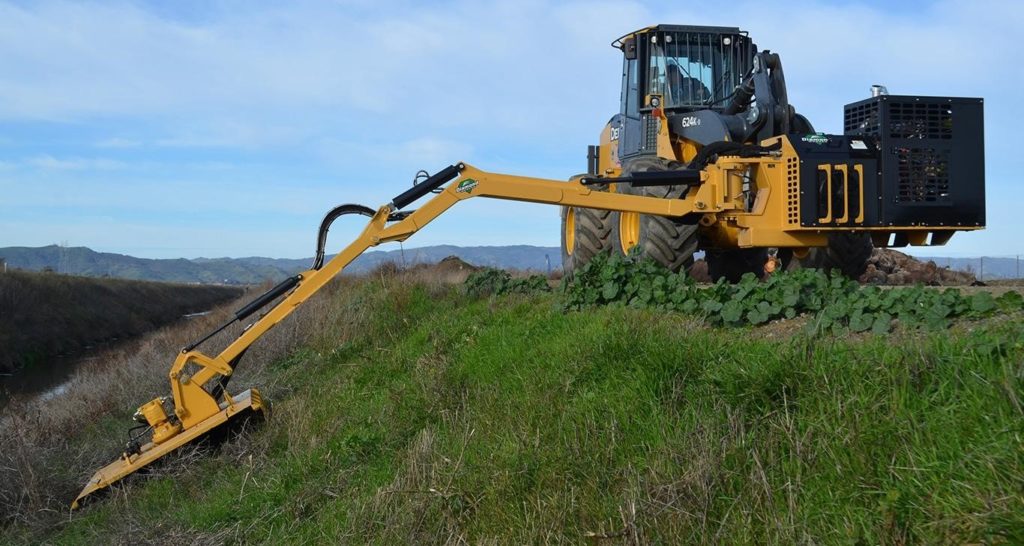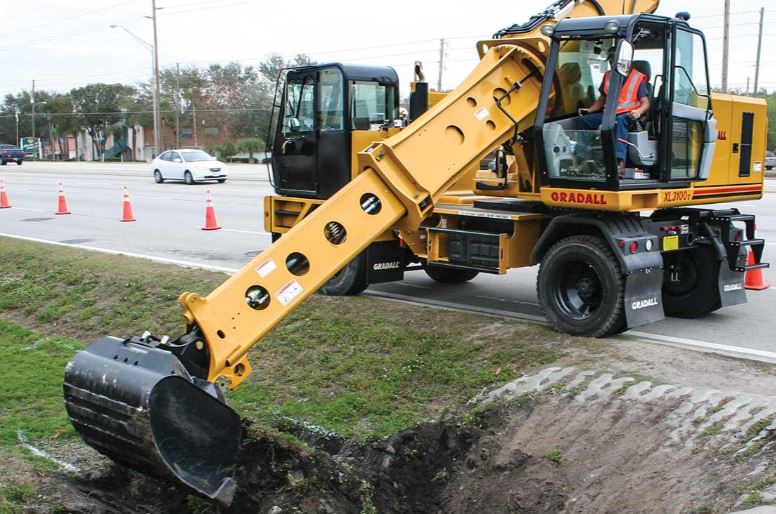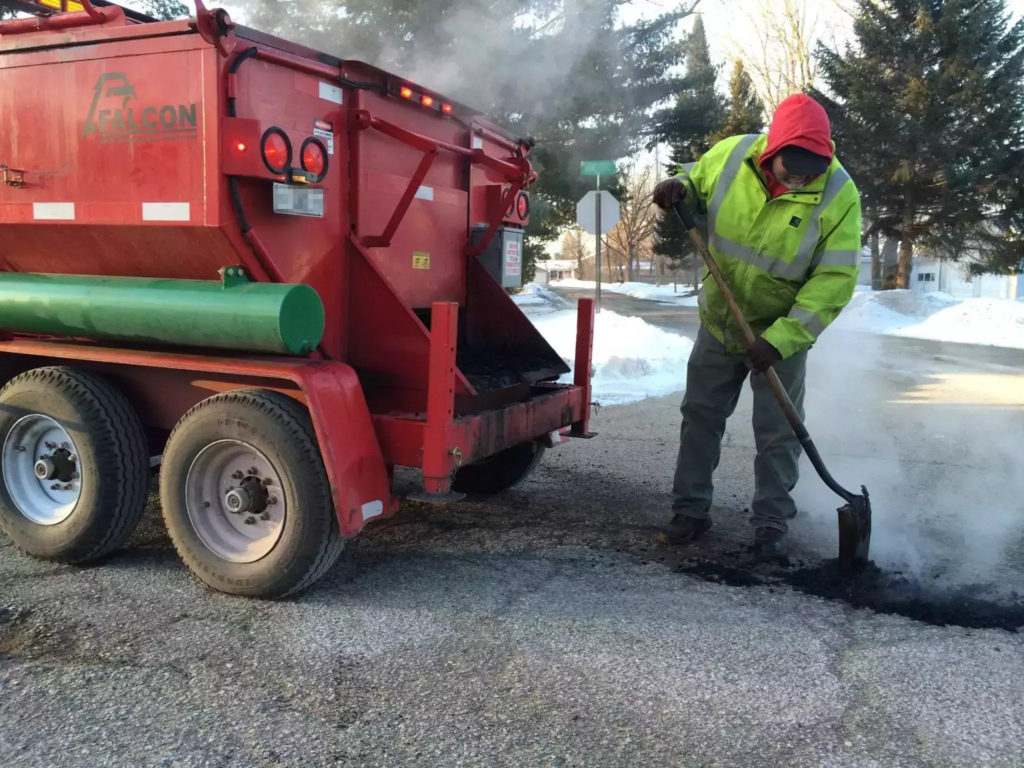
Every public works department needs to acquire vehicles for their fleet. There may be a need for replacement vehicles because existing units are beginning to show their age, or consideration is happening for new and additional types of equipment for road maintenance operations. Whatever the case may be, finding and purchasing the right vehicle can be a time-consuming endeavour.
With over 35 years in the industry, I’ve had numerous occasions to see what does and doesn’t work for municipalities when they acquire public works equipment.
I’ve put together some thoughts on the process of municipal equipment procurement, offering ideas on how to find the best equipment to suit your needs. We’ll touch on several subjects including budgets, personnel, the best acquisition method for your needs, equipment assessments, and what a dealer would like to see along the way.
Before You Begin Your Search
Equipment selection and acquisition is not like a technical or performance spec, where the outcome is monitored to close tolerances or to exact final design criteria (like constructing a road or putting in a sewer line). Machines almost always produce a similar end operational result but from different design principles and functions.
Many different machine makes can offer effective solutions for your department.
The municipality’s job is to evaluate machine capabilities against operational and maintenance requirements and ultimately use a process that selects the machine of best value compared to equal capabilities. There can be occasions when a municipality’s specific requirements limit them to only one machine, and sometimes, to the same machine they have already been using.
It is almost impossible to write a single equipment tender specification that can truly encompass the design of multiple manufacturers: some will have certain features, and some will have others. Consider multiple manufacturers and their designs at the outset to find the best machine to suit your needs.
To me, it has always been detrimental to try and write a bid spec that allows many bidders because it has limited information, or allows openly for different machine features. Pick the most important features you need and investigate the viable bidders that have them. If you discourage unique and innovative features, you will be limited to always looking at yesterday’s models – machine innovation should be rewarded to drive the equipment industry to improve.
If there was no innovation, street sweepers, for example, would still be a worker with a broom, dustpan, and garbage can on wheels.
If a particular feature is deemed to be important to your municipality’s operations, it could also be considered an optional item for consideration, if not specified outright, to allow comparison between bidders.
Managing the Budget
It’s no fun and embarrassing for municipal personnel and suppliers alike to get to the end of a procurement process and find out that there is not enough money allocated for a capital purchase. Re-evaluate machine budgets and prices regularly – annually if possible. Planning for procurement ahead of municipal equipment needs can help manage your budgets so that they can be used effectively.
If this hasn’t been done in a while, I recommend that municipalities update their budget forecasts for future machine replacements now. The COVID-19 pandemic has resulted in large jumps in equipment prices and longer lead times. Municipal internal machine usage charges can then be adjusted to ensure that the capital replacement budget is being funded properly for future purchases.
Personnel Involved in Acquisition
Who is involved in deciding what gets purchased?
Purchasing, operations, and fleet maintenance should ideally all have their part in determining what equipment will work best for their municipality’s needs.

Fleet Maintenance: The fleet maintenance department’s input into repair, reliability, supplier assistance, and longevity is particularly important and insightful when replacing an existing unit. Their history carries the best weight for future decisions for similar purposed machines after operations.
Purchasing: Purchasing ensures the process conforms with municipal purchasing bylaws and that the process has been open, so all potential suppliers have an opportunity for fair involvement from the start.
Within smaller municipalities, people may wear multiple hats as described above.
As a final step, municipal councils approve staff recommendations on equipment purchases. This is the last step in a long process of evaluation, tendering, and selection.
Suppliers who are not the recommended source for purchase can have an opportunity to be a deputation at a council meeting to argue against a recommendation, but their arguments must carry very strong weight to reverse the course of recommendation at that meeting, and one must consider that you would be stepping over the recommendation of people you have been working with all along.
The majority of the time this doesn’t work and harms a supplier’s reputation in the staff’s eyes for future purchases and processes.
The Acquisition Process
An acquisition always starts with a need – either for the replacement of an existing unit due to age or lack of current features or for a new unit based upon new work being considered.
Suppliers would be wise to track the age of their past units sold to municipalities and start reaching out when the lifecycle of the unit may be approaching its end. We often know when a unit is due before the municipality!
Municipalities affix a lifecycle to a unit, and through operating revenue, build up a reserve over time to re-acquire a new unit. Lifecycles can range anywhere from 7 to 15 years depending on the unit and expected amount of use.
Municipal Operations and Fleet departments meet, usually in early fall, to draft what I call a “wish list” of equipment to be obtained during the next fiscal capital budget year. This begins the acquisition process.
At this point, prospective suppliers are contacted, budget prices are obtained, and municipalities potentially look at equipment demonstrations to evaluate the field.
Budgets submitted are rarely the same as what ultimately gets approved in the end, as the competing interests of the municipality are factored in.
Equipment Demonstrations
Equipment demonstrations can be a simple, low-cost exercise of an account manager towing a unit out for a municipality to see, or may require more significant costs including freight, material for a demo, and an operator. As a supplier, it’s nice to have an idea that the confidence in proceeding with the acquisition of a unit is high before we agree to incur these costs.
We understand demos are on our dime, but if the acquisition does not go through, we will likely need to demonstrate all over again next year.
Given the costs, suppliers only want to demo once, with all relevant decision makers present, and at the time in the process where a specific supplier is going to be selected as the preferred choice.
This could be at the beginning during the budget or evaluation stage, or during the tender process after bids are received and a demo is requested to confirm an intended recommendation.
After the municipal council sinks their teeth into the budget and a final budget is approved, the procurement process can begin to acquire those units that have survived the budget cutting.
It’s then a decision on the process for acquisition.
Methods of Procurement
There are several different municipal procurement methods – sole source, tender, and request for proposals/quotations (RFP/RFQ) being the most commonly used. Suppliers in most of these scenarios create submissions or proposals that propose their unit with pricing.
Sole Source Procurement: Sole source procurement is a situation in which only one vendor can supply the technologies desired because they alone have the features, and/or perform the services a municipality requires of their equipment. This is rare, and usually takes reports to Council to justify moving towards a purchase in this way.
Tender: Tender is the tightest process that can be used for machine acquisition. A set of machine specifications has been developed that spell out in great depth the design of a unit and any options requested. Usually, the lowest tender meeting these specifications is chosen, but a tender essentially spells out one or more models. With a tender, prices are read publicly at a tender opening.
It is best to collect suppliers’ input before a tender is released. Oftentimes, a tender will favour one manufacturer over others, and those whose machines are left out may object, raising questions about the integrity of the process if this is not completed first.
Request for Proposal/Quote (RFP/RFQ): In this process, a municipality requests a proposal or quote from a supplier for the purchase of certain types of equipment. Suppliers may have a little more leeway over a tender to make offers on the equipment they think will suit the needs of the municipality best based on the requirements suggested. A proposal may have a process for presentations and evaluations or can be closed entirely from communications until a decision is made.
Collective Buying Agreements: Another method that is gaining popularity is for municipalities to “piggyback” on previous purchasing bids, pricing, and/or decisions with other municipalities, or use a central bidding service such as Sourcewell. This can greatly reduce the amount of work for the bidding process, but the same work is done for the selection process.
I often like the RFQ/RFP process best, as it appears more open and affords the supplier the ability to sell, presenting arguments in their submission of why their unit should be the winning proponent.

If it is not included, it cannot be considered. Anything not included in the tender forms from the municipality’s side can be referenced in a recommendation.
When deciding on a machine purchase, many municipalities prioritize decision-making heavily on the capital acquisition cost of a unit – while this is the most visible and known cost, many other factors must be considered to capture a realistic vision of how much a unit will cost you over its lifetime.
Other factors for a decision include expected longevity, and operation and maintenance costs over a machine’s lifetime. A machine that costs 70% of the price of another but only lasts 50% as long is NOT a good purchase. This can happen when only the capital cost of a unit is considered, often when budgets are strained.
Municipalities can often end up paying more in the long run for lower priced and lower featured equipment just because a capital cost alone is considered.
Working with an experienced supplier can help you determine which unit will provide the operational characteristics that you need, with the best cost based on capital investment, lifetime operations, and maintenance cost expectations.
In any procurement situation, it is the supplier’s job is to explain their design and truly sell the benefits and features of their unit before the procurement is released.
Which is the best method for a municipality to use?
I feel a municipality has the right to get what they want as long as purchasing rules are followed: there is no overt favouritism shown, no appearance of collusion or graft, and a reasonable evaluation process has been undertaken.
If the machine a municipality truly wants has features or capabilities that only one manufacturer clearly can provide, then a municipality should use the sole source route. They shouldn’t disguise it as a tender process when it would be better to negotiate with the desired supplier.
An equipment tender is the tightest process for acquisition. Suppliers will often have sample machine tender specs that will describe in detail the exact unit a municipality is currently using. Usually, the machine spec developed leans heavily or entirely on one machine or manufacturer – the one the operations department feels is the best unit for the job. Once a tender is published, the supplier’s window for influencing a purchasing decision is likely over.
Using such a tender format is best suited for municipalities whose decision-making hierarchy respects that the personnel and the selection process used are making the best decision for the municipality.
Having a “loose” specification that encompasses several designs will only create a mess in the process, as there is no clear process for evaluation. Be clear about the needs of your municipality and have direction in the type of equipment you are looking for to find an appropriate unit.
That being said, it’s important to understand that answering one “no” to a minor point in a spec warrant should not eliminate a machine for consideration. Trust your supplier to consider your needs and the equipment they provide – suppliers have the expert knowledge and insight to make suggestions you may not have considered that can help expand your capabilities, manage your public works assets more effectively, or even take on more projects than you have in the past.
Consider Equipment Evaluations
When choosing equipment for purchase, contemplate using an equipment evaluation checklist or matrix to help determine the appropriate machine for your municipality. Again, the key to a municipal evaluation should not be the lowest price, it should be evaluated based on “equal performance for equal value”.
Once you have considered the needs of each group who uses the machine, equipment evaluations with different percentage weighting should be the next step in determining the appropriate unit. The evaluation process for determining the desired machine after a tender is closed can follow up questions, presentations, further demonstrations, and referrals.
An Open Process
I have been selling to municipalities for decades now; if I get what I think is an open and fair look, and the municipality chooses something else, then I, along with my manufacturers, must evaluate how we can become better to become the preferred supplier. Maybe a competitor has a new, innovative feature, and I need to encourage our manufacturers to change. Maybe it is price.
A supplier should only consider objecting to a process if the process has been essentially closed from the start and biased to one supplier, but the municipality is proceeding with the appearance of an open process.
Creating a clean and honest procedure of municipal procurement with your available suppliers will ensure that you get the best equipment for the job, and for the needs of your municipality.
If you’re looking to search for a new unit for your municipality, and aren’t sure where to start, contact Amaco today. We’re happy to help guide you through the process or make recommendations to ensure the equipment you buy will suit your needs and last you as long as possible.
- 8 Questions To Ask When Buying Used Aggregate Equipment - June 16, 2025
- 5 Key Steps to Choosing the Right Curb Machine for Your Fleet - October 22, 2024
- 5 Tips for Purchasing Used Excavating Equipment in Ontario - September 26, 2024

